So what’s next?
At this point in the coronavirus pandemic, you’ve no doubt adjusted to remote operations, updated your customers on your status, and you’ve probably even sent out a tip or two about social distancing. But in many ways the hard part is just beginning: seeking growth amidst a slowing economy. So what should your marketing look like during the current pandemic?
Continuing to Market During a Slowdown Will Drive Greater Long-Term Revenue
First, a bit of personal history. I began my career as a marketing consultant at the tail end of the dot-com bubble. When it burst, one of the client projects I did was to evaluate the impact of marketing spend during a recession and I found something surprising:
Cutting marketing activities and spend during difficult times helps in the short term, but significantly damages a brand’s market share in the long term
We know this thanks to some strong historical research using a dataset called the Profit Impact for Marketing Strategy that has tracked companies’ spend in different areas and subsequent market performance since the 1970s. And what the PIMS data says is that, while companies that cut promotional spend usually see stronger returns during a recession, those returns come at the expense of long-term market share.
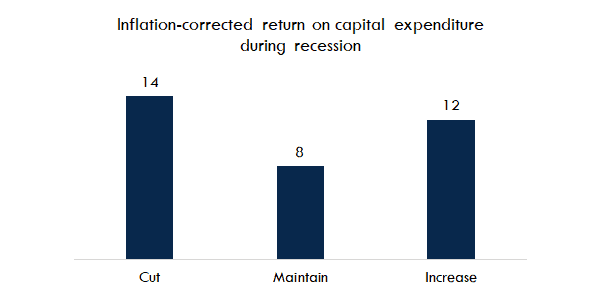
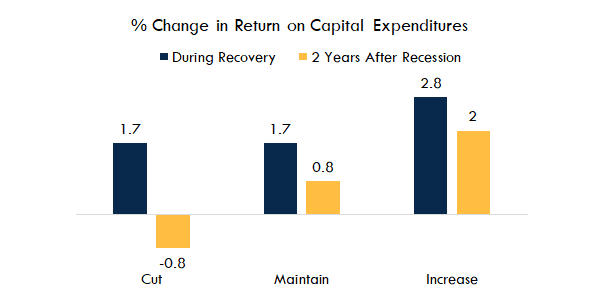
Note: a deeper review of the data is available in this presentation by Michael Johnston.
How Do You Market in Uncertain Times?
Of course it’s one thing to say “keep marketing” and it’s quite another to figure out how to do so in the face of reduced budgets, declining revenue, and general uncertainty. In these situations, digging in to a few core metrics can help you understand exactly where to focus resources and where to cut back on activity:
- Impression Volume: Fundamentally, you want to keep your impression share as high as you reasonably can in order to capitalize on the fact that others are likely scaling back their activities. These impressions can come from anywhere: email, SEO, organic/viral social, sales touches, etc. The important thing is to make sure you’re not letting your volume of communications to the market slow.
- Cost per Lead: Of course, not all impressions are created equal. No doubt you have a few low performing marketing channels that are taking time and budget from other areas. Now is the time to review your costs per lead across your various channels and cut out your low performers. Target cost per lead benchmarks for a number of industries from GoConvert appear below (as with any benchmark, your mileage will no doubt vary).
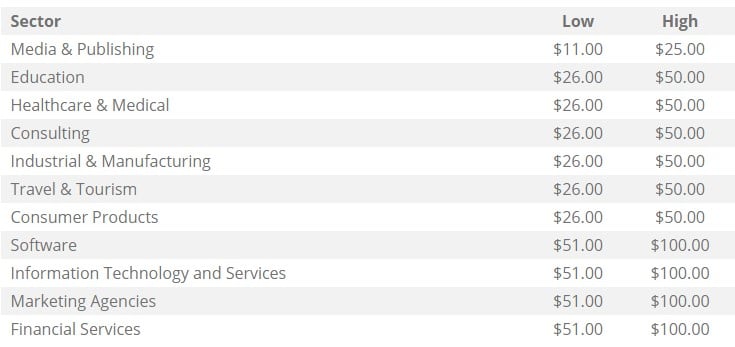
- Cost per sale: Arguably the most relevant metric to business results is your cost per sale. Here, you’re looking for the cheapest source of leads that convert to sales. What can you do to drive more volume in those channels, and where can you pause more expensive activities?
- Time to close: Finally, keep an eye on your conversion timeframe from lead to sale. It is very common for decision cycles to lengthen during uncertain times, and you want to be hyper-aware of any changes that will impact your revenue forecasting.
The Most Cost-Effective Marketing Channels During a Recession
With the above in mind, let’s take a look at some of the most effective marketing channels to use during the COVID-19 pandemic:
1. Email: There’s a reason why you’re seeing emails from companies you’d thought forgot about you: early data is showing that email engagement is rising during the coronavirus pandemic.
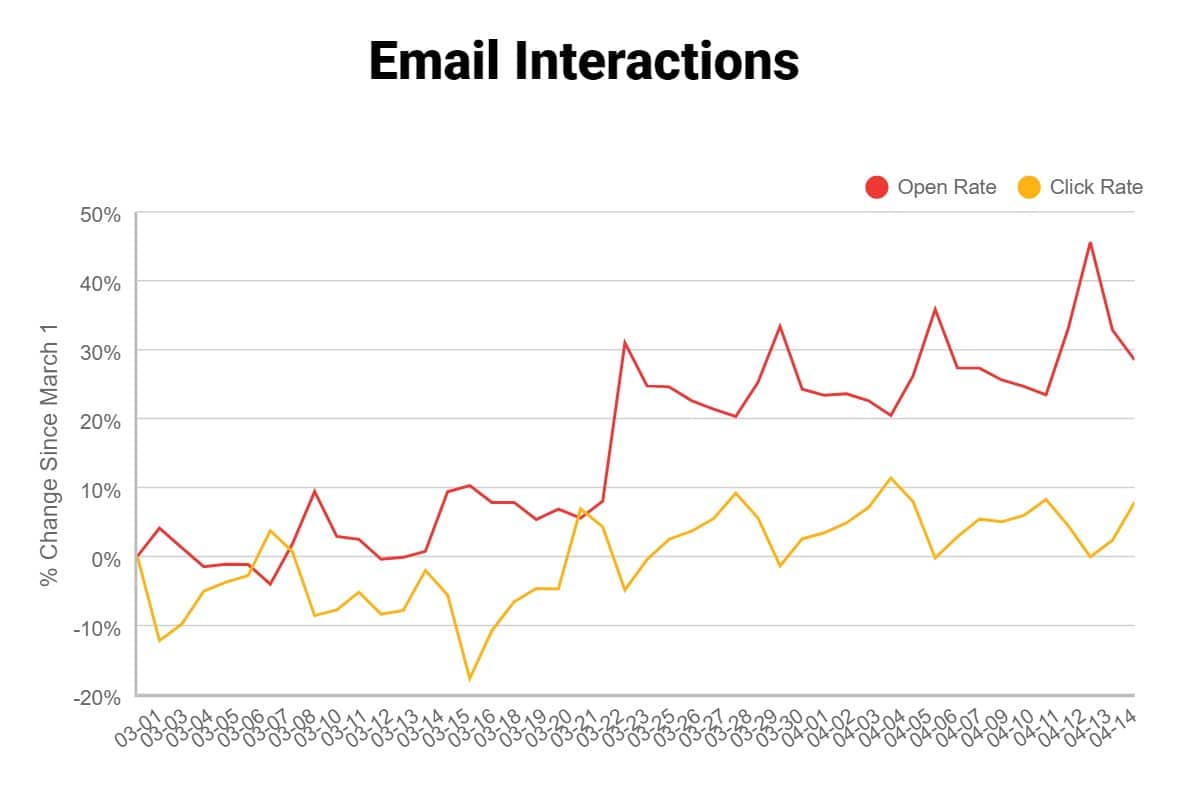
March and April 2020 Email Interaction Data from BounceX
With more people in front of their devices for longer periods of time, coupled with the fact that increasing email volume has little incremental cost, this channel makes an ideal platform to stay in front of your customers.
But it’s not just the low cost of email that makes it an ideal tool. It’s the fact that email is the best lead conversion and customer upselling tool you have.
Acquiring a new customer costs five times more than growing revenue from an existing customer
Forrester research noted that growing business from your existing database is five times more cost effective than finding new customers. And there’s no time like a global pandemic to start boosting your marketing ROI via email.
2. Organic Social: As you’d expect if people were stuck inside for longer periods of time, social media analytics company RivalIQ has found that social engagement has increased across its user base.
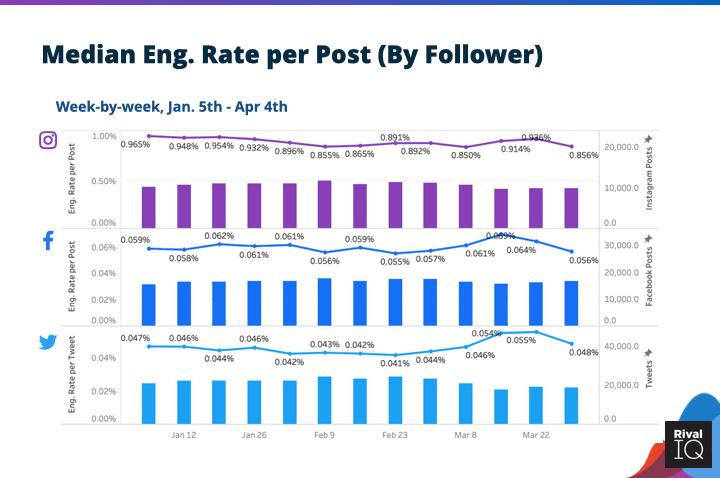
Interestingly enough, this growth has occurred in spite of posting frequency actually falling to ~3 posts weekly. The drop in posting is is likely due to many companies not quite wanting to return to normal scheduled activities in light of changing conditions, but the rising engagement indicates that, just as with email, people are spending more time on their social channels.
While organic social media typically doesn’t enjoy the same reach as paid social posts, you can make up for a lower ad budget by interacting more with your followers in order to boost engagement.
3. SEO: how many of you would have turned to search engine optimization in response to a pandemic? While SEO is generally not thought of as a fast-acting marketing channel, the fact is that people can only be glued to the coronavirus news for so long before they’re going to return to their normal browsing habits. And with more people stuck inside with nothing to do, overall search volume is skyrocketing.
Web browsing has increased by 70% according to one media study
There’s never been a better time to freshen up your site’s content, push out that white paper, or make sure that your metadata is as cleaned and optimized as it can be. Google ranks sites based on recency of updates (among many other factors), and you don’t want to be losing impressions because someone else posted a more current blog.
What Should Marketers Say During Coronavirus?
You’ve probably seen (or sent) a version of the “standard” pandemic response email dozens of times by now: a few vague platitudes about being “in this together,” a note on operational changes, and maybe a discount offer or two. But now that we’re more than a month into social distancing, there’s not much new most brands will be able to contribute to the pandemic conversation and market research studies have shown that brands are not seeing advertising damage their reputations during this time, so it’s more than appropriate to return to your “normal” campaigns.
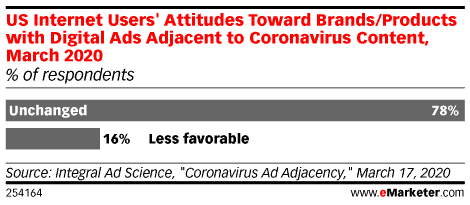
It’s appropriate to return to “normal” marketing messages, provided you recognize the “new normal”
An understanding of how your target audience’s needs have shifted, and how your value proposition will need to adjust to meet those needs, is your best friend when developing your ongoing “corona campaigns”. Here are a few messaging tips for how to shape your marketing messages during COVID-19:
1. Keep Practicality and Direct Action at Your Message’s Core
The majority of consumers and businesses are tightening their belts during this uncertain period, so your messaging should stay focused on the very immediate, practical benefits your call to action will deliver. If your product or service is discretionary, what are some ways in which it can help your customers deal with the current situation? How can you help their peace of mind?
If you’re offering a more “essential” product or service, how will your customers access it? What does the process look like? Focus on the details of your offer, as opposed to awareness-based campaigns. A recent Coronavirus Trust Barometer report from Edelman provides guidance on the specific tone to strike:
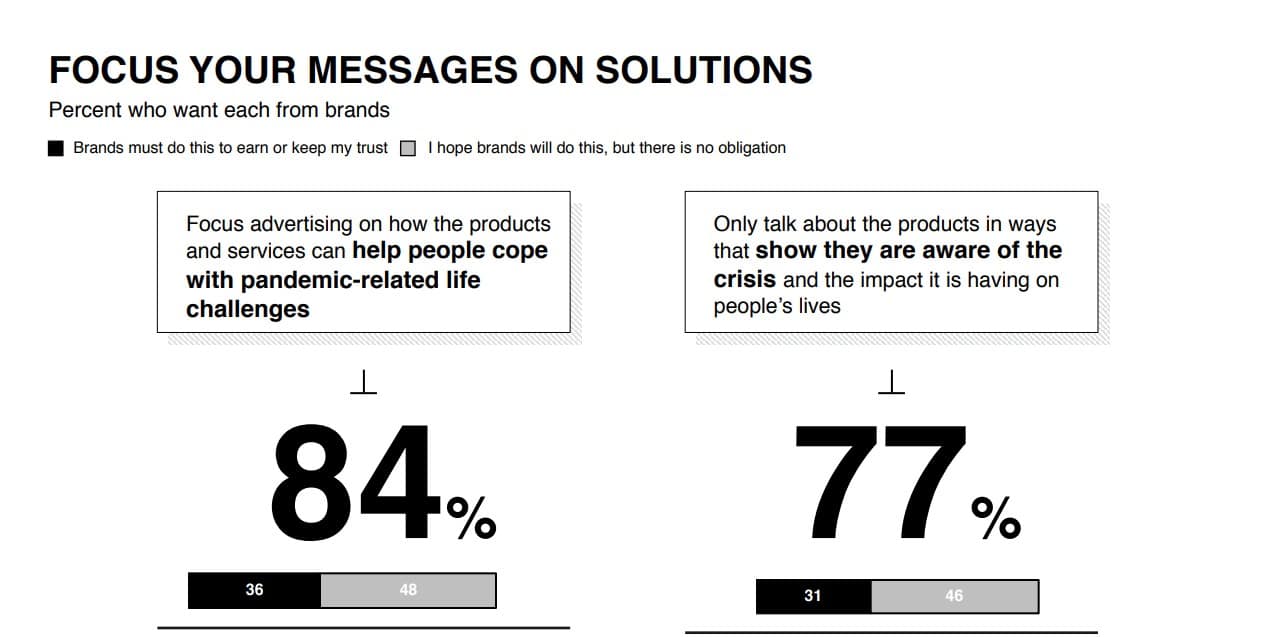
2. Use Deals and Discounts Sparingly
Offering deep discounts is a double-edged sword: you might need them to encourage purchase from an otherwise reluctant audience, but that same audience will remember that low price down the road and come to expect it. Two industries stuck in this cycle are the automotive industry with its 0% down financing and fast food chains with their dollar menus. You can counteract this issue with limited time offers, but you’ll need to be judicious about deploying your doorbusters. You may create long-term price concerns that are difficult to overcome.
In these situations, it might be more appropriate to offer additional incentives with purchase such as free support, other giveaways, product tie-ins, and more rather than an initial heavy discount.
3. References to the Pandemic Should Come With Action That Can Help
If you are still referencing the COVID-19 pandemic in your marketing, consumer mood has shifted from desires for information to expectations for action. And those brands that are taking action: raising money, making donations, shifting production to meet PPE demands, are the ones best-positioned to earn future business:
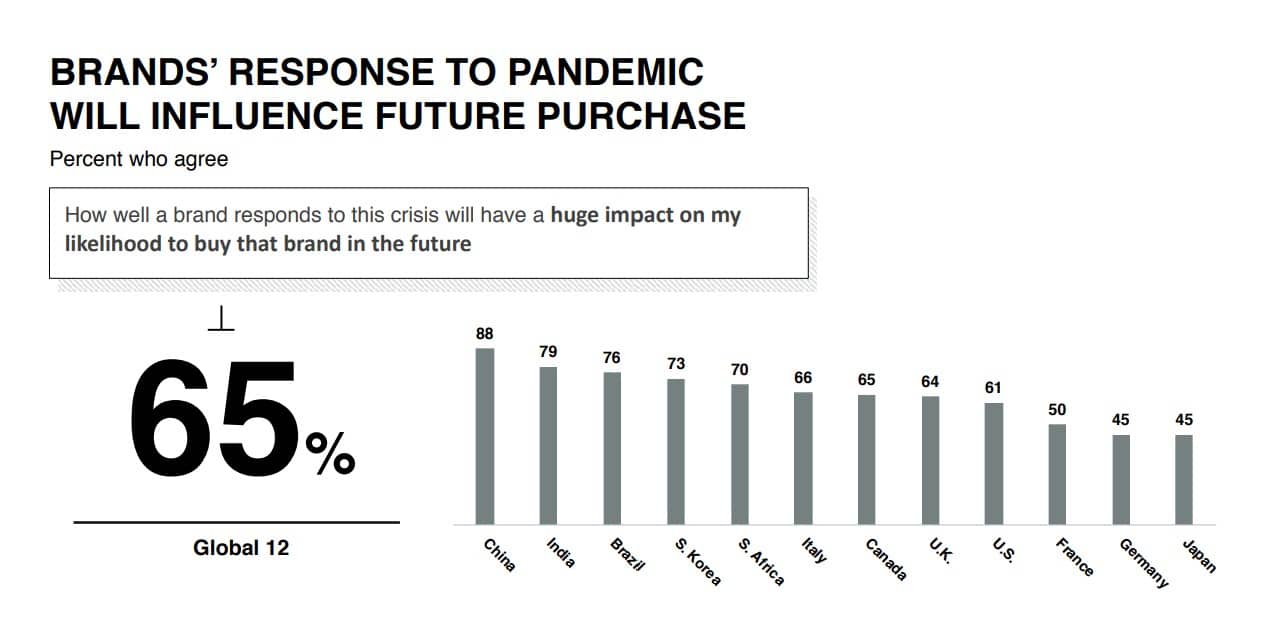
Think of Twitter’s CEO donating $1 billion to coronavirus relief, or Nordstrom retraining its tailors to make PPE. These are the actions that consumers expect.
Conclusion
Marketing During Coronavirus Will Take Caution and Patience, but it Will Pay Off
We hope that this post has been helpful as you gather yourself for the next phase of the COVID-19 pandemic. If you’d like to schedule a conversation about exactly how you can keep marketing during these uncertain time, please contact us.

